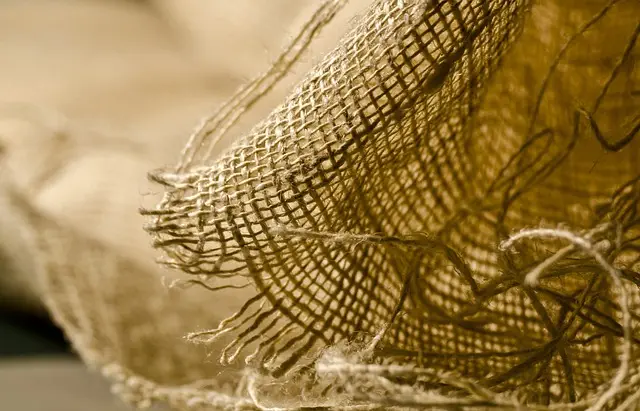Kratom, an African root historically valued for health benefits and recently identified as potentially effective for muscle soreness relief, contains alkaloids like mitragynine and 7-hydroxymitragynine that may engage with opioid receptors to provide pain relief. Different strains of kratom, such as Indo, Thai, Maeng Da, Bali, and Borneo, offer various effects from analgesic to energizing or sedating, catering to diverse needs for muscle pain management. Users should begin with a low dosage, consider the strain's characteristics, and consult healthcare professionals before integrating kratom into their health regimen due to its potency and potential interactions with other medications. For optimal benefits, consistent use of high-quality, ethically sourced kratom products, combined with a balanced diet, hydration, and appropriate exercise, can complement the body's healing processes. It is crucial to monitor individual responses and adjust as needed for personalized care and well-being. Safety, personalization, and holistic health practices should guide the use of kratom within an overall health strategy.
Muscle soreness can be a persistent companion for athletes, fitness enthusiasts, and even those engaging in daily physical activities. Exploring natural remedies, the spotlight falls on kratom, an African root with a growing reputation for its potential therapeutic benefits. This article delves into the mechanisms behind kratom’s muscle soothing effects, examines how different strains can influence recovery, and provides guidelines to safely incorporate this botanical into your muscle care routine. Discover how kratom might offer a natural pathway to alleviate post-exercise discomfort and enhance overall wellness.
- Unraveling the Potential of African Roots: Kratom's Role in Muscle Soreness Relief
- Understanding Kratom Strains and Their Impact on Sore Muscles
- Safeguarding Well-being: Best Practices for Incorporating Kratom into Your Muscle Care Routine
Unraveling the Potential of African Roots: Kratom's Role in Muscle Soreness Relief

Kratom, an African root with a rich historical and medicinal background, has garnered attention for its potential in alleviating muscle soreness. Traditionally used in Southeast Asian cultures for its various health benefits, kratom contains a unique blend of alkaloids that may contribute to its analgesic properties. These alkaloids, primarily mitragynine and 7-hydroxymitragynine, are believed to interact with the body’s opioid receptors, offering pain relief without the side effects typically associated with prescription opioids. Users often report muscle soreness relief after consuming kratom, suggesting its efficacy in managing discomfort from rigorous physical activities or chronic pain conditions. The exact mechanisms behind its analgesic effect are still under investigation, but preliminary studies indicate that kratom could be a promising alternative for those seeking natural remedies for muscle soreness.
When incorporating kratom into a health regimen aimed at muscle soreness relief, it’s crucial to approach its use with caution and informed consent due to its potent nature and the varying degrees of regulation across different regions. Users should start with low doses and consult with healthcare professionals to avoid potential interactions with other medications and to determine the appropriate strain and preparation of kratom for their specific needs. As research continues to evolve, the full scope of kratom’s capabilities in the realm of natural health remedies may be further uncovered, potentially offering a valuable tool for those experiencing muscle soreness.
Understanding Kratom Strains and Their Impact on Sore Muscles

Kratom, an African root with alkaloid compounds, has been traditionally used in Southeast Asia for its medicinal properties. Among these properties, certain strains of kratom have garnered attention for their potential to alleviate muscle soreness. The two primary types of kratom leaves are the Indo and the Thai strains, each with distinct alkaloid profiles that can influence the user’s experience. Indo strains, rich in 7-hydroxymitragynine, are known for their analgesic effects, which may be particularly beneficial for muscle pain relief. On the other hand, Thai kratom contains higher levels of mitragynine and can induce stimulating effects that might complement the pain-relieving properties for those with physically demanding activities.
When considering kratom for muscle soreness relief, it’s crucial to understand the nuances between strains like Maeng Da, Bali, and Borneo, as they each offer different degrees of analgesic benefits. Maeng Da, often regarded as a premium strain due to its high alkaloid content, is revered for its balancing effects that can simultaneously relieve pain and provide energy. Bali kratom, on the other hand, is known for its strong sedative properties, which might be more suitable for long-term muscle recovery and relaxation. Meanwhile, Borneo kratom is celebrated for its ability to manage discomfort without the overwhelming sedation associated with some strains, making it a versatile choice for those seeking pain relief during both active and resting periods. Understanding these subtle differences can aid individuals in selecting the most effective strain of kratom for their specific muscle soreness needs.
Safeguarding Well-being: Best Practices for Incorporating Kratom into Your Muscle Care Routine

When integrating kratom, an African root traditionally used for its health-supporting properties, into your muscle care routine, it’s crucial to prioritize well-being and safety. To ensure a harmonious integration of kratom for muscle soreness relief, adhere to these best practices. Firstly, begin with a low dosage to gauge how your body responds to the alkaloids present in kratom. This cautious approach allows for personalized adjustments based on individual sensitivity and the severity of muscle soreness. Additionally, it’s advisable to consult with a healthcare provider beforehand, as kratom may interact with other medications or have contraindications for certain conditions.
Moreover, consistency is key when using kratom for ongoing muscle care. Opt for high-quality, ethically sourced kratom products to maintain efficacy and purity. Regularly assess the effectiveness of kratom in managing soreness, and adjust your intake frequency and dosage as necessary. It’s also important to combine kratom use with other holistic practices such as proper hydration, a balanced diet, and regular physical activity tailored to your fitness level. This comprehensive approach supports the body’s natural healing processes and can enhance the benefits of kratom for muscle care. Always remain attuned to your body’s feedback and be prepared to modify your routine if discomfort or adverse effects arise. Safeguarding your well-being should always be at the forefront when incorporating any new supplement into your health regimen.
Muscle soreness can be a significant hindrance to an active lifestyle, but the exploration of kratom, an African root traditionally used for its medicinal properties, presents promising avenues for relief. This article has delved into the potential of kratom in alleviating muscle discomfort, examined the distinct effects of various kratom strains, and provided cautious guidance on integrating this natural substance into one’s wellness regimen responsibly. As with any health remedy, it is crucial to approach its use thoughtfully and within the confines of safe practices. For those seeking a botanical approach to muscle care, understanding the nuances of kratom can be a valuable addition to your self-care toolkit.






